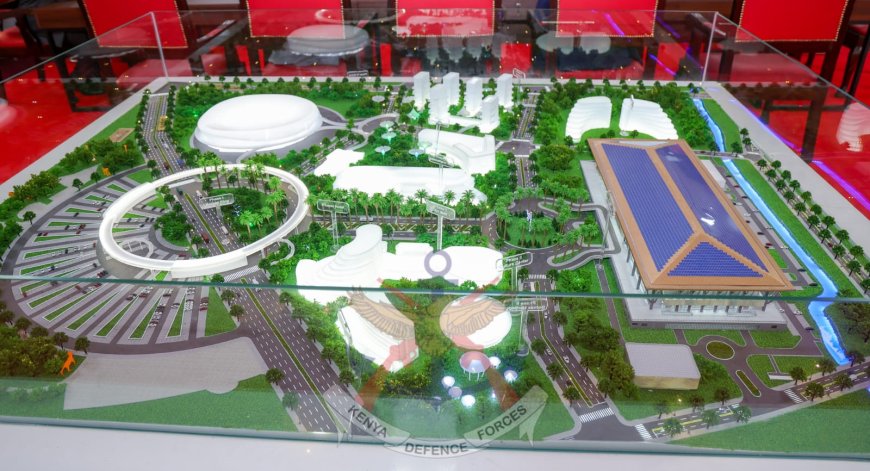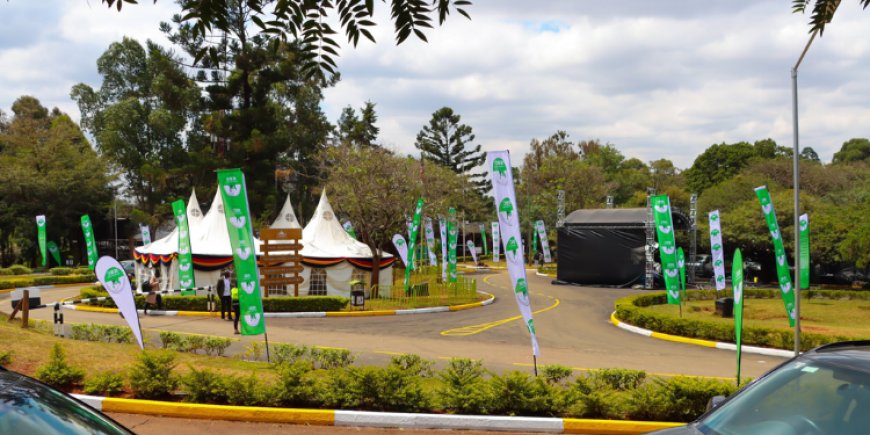How New Bomas Of Kenya Will Look Like After Ksh31.6B Extreme Makeover [PHOTO]
The ambitious project, spearheaded by the government, aims to position Nairobi as a leading destination for international conferences, exhibitions, and cultural events
![How New Bomas Of Kenya Will Look Like After Ksh31.6B Extreme Makeover [PHOTO]](https://viraltea.co.ke/uploads/images/202511/image_870x_691339bdbbd2a.jpg)
The iconic Bomas of Kenya is poised for a transformative makeover under a Ksh31.6 billion redevelopment project that will see the cultural landmark converted into the Bomas International Convention Complex (BICC).
The ambitious project, spearheaded by the government, aims to position Nairobi as a leading destination for international conferences, exhibitions, and cultural events, combining modern infrastructure with the country’s rich cultural heritage.
The redevelopment plan, according to official designs and government statements, will see the complex span over 323,500 square metres, making it one of the largest cultural and hospitality investments in Kenya in recent years.
Features
At the heart of the project is a 5,000-seater main auditorium, featuring multi-tiered balconies, VIP sections, and state-of-the-art acoustics, capable of hosting high-profile conferences, summits, and entertainment events.
Large foyers and breakout areas have been incorporated to facilitate smooth movement and crowd management. At the same time, advanced lighting and sound systems will make the venue suitable for both formal and entertainment events.

Artistic impression of what the Bomas International Convention Complex (BICC) will look like when complete. /MINISTRY OF DEFENCE
Complementing the main auditorium will be a secondary hall that can accommodate about 350 guests. This space is expected to host smaller meetings, workshops, and training sessions, ensuring that the complex can cater to a variety of functions simultaneously.
Additionally, a banquet hall with a 3,000-seat capacity will feature full catering and kitchen facilities to support large-scale dinners, receptions, and ceremonial events.
A special feature of the project is the Presidential Hall, spanning approximately 5,200 square metres, which will house VIP and VVIP lounges, executive offices, and a 150-seat private restaurant reserved for dignitaries. This hall is expected to serve as the main reception area for heads of state and other high-level international guests during major events.
The redevelopment also includes a substantial hospitality component. Plans call for three hotels, ranging from five-star to three-star, targeting a mix of diplomats, executives, tourists, and local visitors.
The complex will also incorporate residential apartments, a shopping mall, a cultural heritage centre, and a modernized “traditional village” area, designed to preserve and showcase Kenya’s ethnic diversity through architecture, crafts, and live performances.
Officials insist that the project will maintain Bomas’ cultural identity while expanding its function into a multi-use international venue.
Sustainability has been a key focus of the design, with features such as solar panels, rainwater harvesting systems, passive cooling technology, and low-emissivity glass intended to reduce the complex’s environmental footprint and operational costs.
A heliport, 550,000 square metres of parking space, and underground technical rooms for power, IT, and logistics operations are also included in the master plan.
Collectively, these enhancements are expected to position the complex among the top convention centres in Africa, capable of hosting multiple international events at once.
Government officials have highlighted the potential economic and social benefits of the project. They note that Nairobi already hosts numerous regional headquarters for multinationals and United Nations agencies, and the Bomas International Convention Complex will provide a modern alternative to the Kenyatta International Convention Centre (KICC), which is over five decades old and faces infrastructural limitations.
If completed as planned, the project could attract global conferences, stimulate tourism, create thousands of jobs, and generate billions of shillings in revenue for local businesses across the hospitality, entertainment, and transport sectors.
Its location along Lang’ata and Magadi roads will ensure accessibility for visitors traveling from the city centre or Jomo Kenyatta International Airport (JKIA) while enhancing real estate value in the surrounding areas.
However, the redevelopment has not been without controversy. Critics have raised concerns about the potential impact on cultural and environmental heritage, noting that parts of the current site host indigenous trees, green spaces, and rare bird species.
Conservationists warn that large-scale construction could disrupt these natural habitats, while cultural advocates caution that modernization may dilute the authenticity of the traditional village and other heritage features.
Questions have also been raised over procurement transparency and cost management. Civil society groups and watchdog organizations have alleged irregularities in the tendering process, arguing that some contracts were awarded without sufficient competitive bidding or public oversight.
Analysts further warn that the Ksh31.6 billion budget could be exceeded due to inflation, logistical challenges, or political delays. Given Kenya’s current fiscal constraints, some experts advise caution, emphasizing the need for strict oversight and accountability.
Despite these concerns, government officials remain confident that the project will elevate Kenya’s global standing. They describe the redevelopment as a national rebranding effort, designed to showcase Kenya’s cultural richness while providing world-class facilities for business, diplomacy, and entertainment.
Cultural activities at the current Bomas site have been temporarily suspended to allow construction and upgrades to proceed, signaling that work is already underway.
The Bomas International Convention Complex is expected to offer a fully integrated experience, blending cultural heritage with modern luxury. Visitors will be able to attend international conferences, experience traditional performances, shop in high-end retail spaces, and stay in five-star accommodations, all within the same compound.
Officials have emphasized that the facility will provide both a functional meeting space and a cultural showcase, making it a unique offering on the continent.







